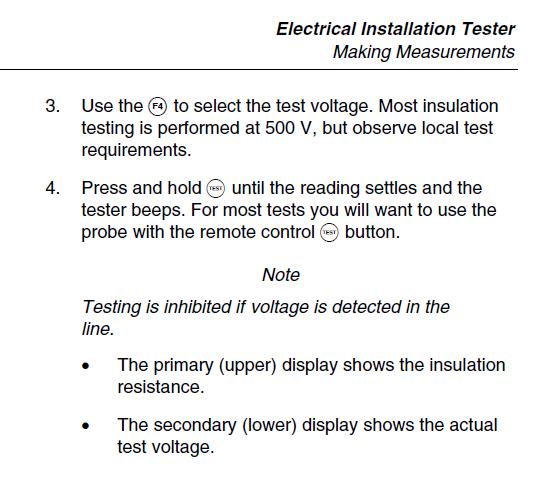We recently discussed (supplemented by some experiments I did with some bits of wet card!) how attempts to measure IR with very low voltages (e.g. with a multimeter) can give seriously high results (hence potentially dangerously misleading) as compared with results obtained with a proper IR meter using a high (usually 500V) test voltage. However, my experiments at that time seemed to indicate that any DC test voltage above about 30-50V gave much the same results.
Today I replaced a damaged metalclad socket in my daughter's garden shed, and dutifully undertook a few tests of the circuit. The shed is fed by about 20m of buried 4mm² SWA (inherited, so details of installation unknown), and has a mini CU, a couple of double sockets (never appreciably loaded) and a lighting circuit.
The Zs was fine from the shed. IRs (with nothing connected) were all >200 MΩ at 250V, but only about 3 MΩ at 500V and 1000V. I've never seen a marked difference between 250V and 500V (or 1000V) IR results before - what are other people's experiences?
I'm not too worried about the 3 MΩ figure (maybe due to moisture in some of the shed's accessories?) - when I have a bit more time, I'll investigate the circuit a bit more fully, to ascertain exactly where the lowish IR (at 500V) is coming from. However, I am intrigued and surprised by the 250V/500V difference.
Kind Regards, John
Today I replaced a damaged metalclad socket in my daughter's garden shed, and dutifully undertook a few tests of the circuit. The shed is fed by about 20m of buried 4mm² SWA (inherited, so details of installation unknown), and has a mini CU, a couple of double sockets (never appreciably loaded) and a lighting circuit.
The Zs was fine from the shed. IRs (with nothing connected) were all >200 MΩ at 250V, but only about 3 MΩ at 500V and 1000V. I've never seen a marked difference between 250V and 500V (or 1000V) IR results before - what are other people's experiences?
I'm not too worried about the 3 MΩ figure (maybe due to moisture in some of the shed's accessories?) - when I have a bit more time, I'll investigate the circuit a bit more fully, to ascertain exactly where the lowish IR (at 500V) is coming from. However, I am intrigued and surprised by the 250V/500V difference.
Kind Regards, John


